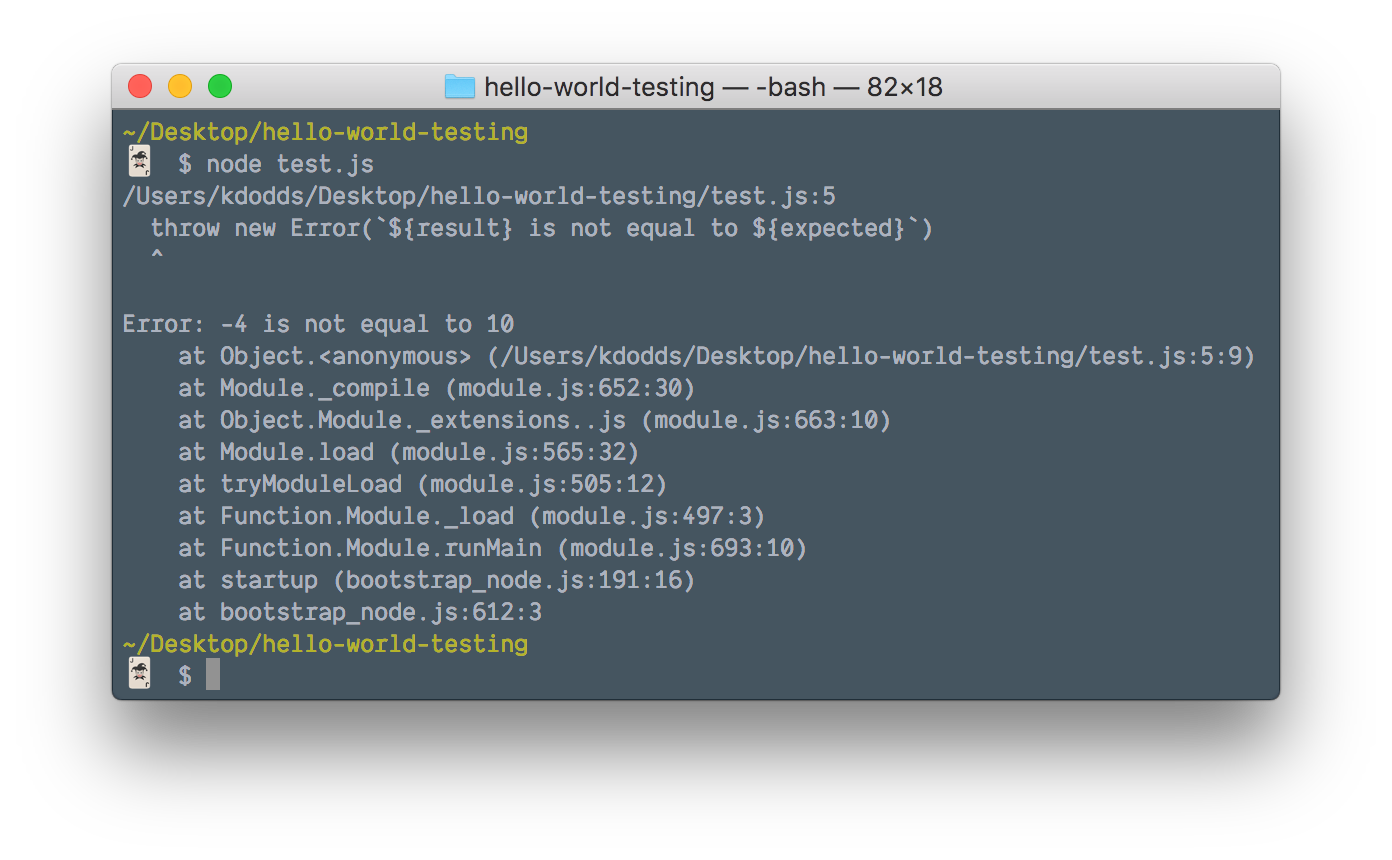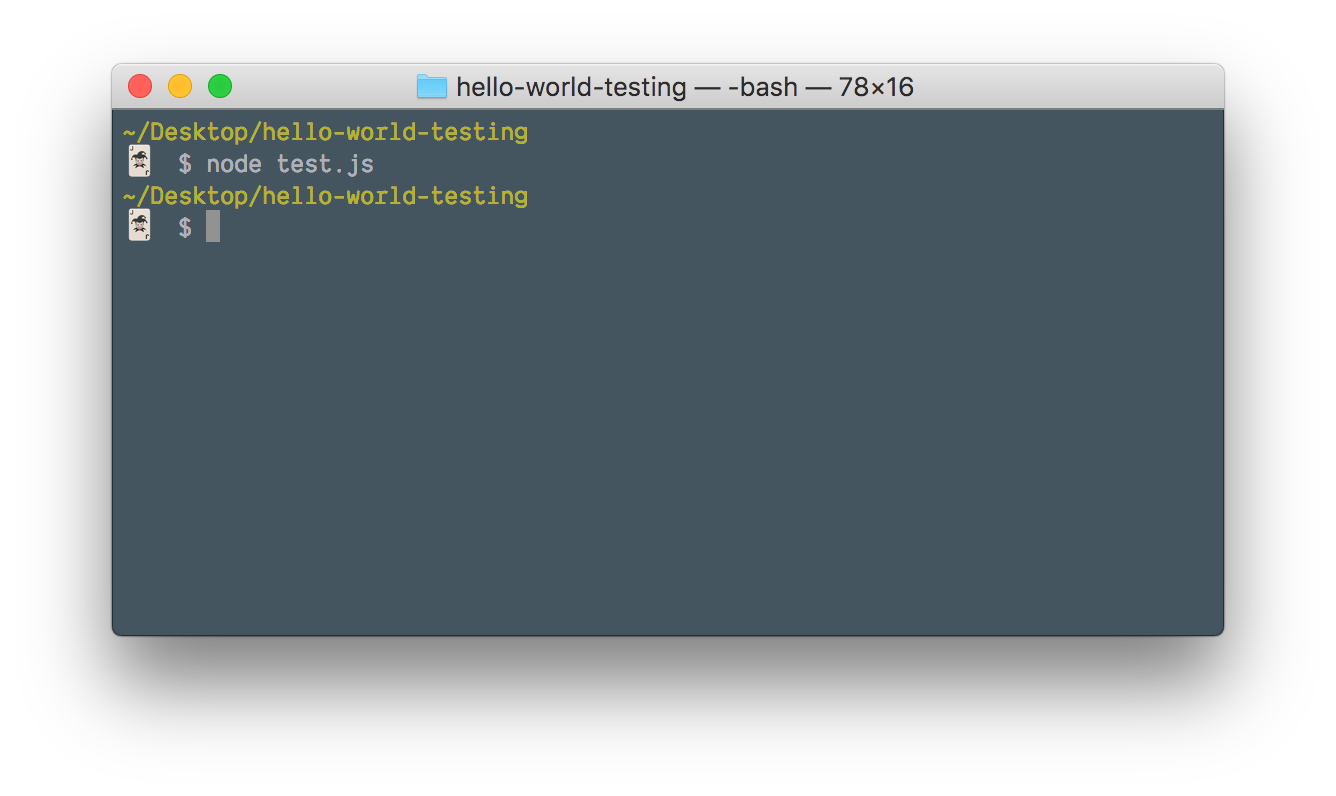Demystifying JavaScript Testing
Many people have messaged me, confused about where to get started with testing. Just like everything else in software, we work hard to build abstractions to make our jobs easier. But that amount of abstraction evolves over time, until the only ones who really understand it are the ones who built the abstraction in the first place. Everyone else is left with taking the terms, APIs, and tools at face value and struggling to make things work.
One thing I believe about abstraction in code is that the abstraction is not magic — it’s code. Another I thing I believe about abstraction in code is that it’s easier to learn by doing.
Imagine that a less seasoned engineer approaches you. They’re hungry to learn, they want to be confident in their code, and they’re ready to start testing. ? Ever prepared to learn from you, they’ve written down a list of terms, APIs, and concepts they’d like you to define for them:
- Assertion
- Testing Framework
- The
describe/it/beforeEach/afterEach/testfunctions - Mocks/Stubs/Test Doubles/Spies
- Unit/Integration/End to end/Functional/Accessibility/Acceptance/Manual testing
So…
Could you rattle off definitions for that budding engineer? Can you explain the difference between an assertion library and a testing framework? Or, are they easier for you to identify than explain?
Here’s the point. The better you understand these terms and abstractions, the more effective you will be at teaching them. And if you can teach them, you’ll be more effective at using them, too.
Enter a teach-an-engineer-to-fish moment. Did you know that you can write your own assertion library and testing framework? We often think of these abstractions as beyond our capabilities, but they’re not. Each of the popular assertion libraries and frameworks started with a single line of code, followed by another and then another. You don’t need any tools to write a simple test.
Here’s an example:
const {sum} = require('../math')
const result = sum(3, 7)
const expected = 10
if (result !== expected) {
throw new Error(`${result} is not equal to ${expected}`)
}Put that in a module called test.js and run it with node test.js and, poof, you can start getting confident that the sum function from the math.js module is working as expected. Make that run on CI and you can get the confidence that it won’t break as changes are made to the codebase. ?
Let’s see what a failure would look like with this:

So apparently our sum function is subtracting rather than adding and we’ve been able to automatically detect that through this script. All we need to do now is fix the sum function, run our test script again and:

Fantastic! The script exited without an error, so we know that the sum function is working. This is the essence of a testing framework. There’s a lot more to it (e.g. nicer error messages, better assertions, etc.), but this is a good starting point to understand the foundations.
Once you understand how the abstractions work at a fundamental level, you’ll probably want to use them because, hey, you just learned to fish and now you can go fishing. And we have some pretty phenomenal fishing polls, uh, tools available to us. My favorite is the Jest testing platform. It’s amazingly capable, fully featured and allows me to write tests that give me the confidence I need to not break things as I change code.
I feel like fundamentals are so important that I included an entire module about it on TestingJavaScript.com. This is the place where you can learn the smart, efficient way to test any JavaScript application. I’m really happy with what I’ve created for you. I think it’ll help accelerate your understanding of testing tools and abstractions by giving you the chance to implement parts from scratch. The (hopeful) result? You can start writing tests that are maintainable and built to instill confidence in your code day after day. ?
The early bird sale is going on right now! 40% off every tier! The sale is going away in the next few days so grab this ASAP!
P.S. Give this a try: Tweet what’s the difference between a testing framework and an assertion library? In my course, I’ll not only explain it, we’ll build our own!
The post Demystifying JavaScript Testing appeared first on CSS-Tricks.
